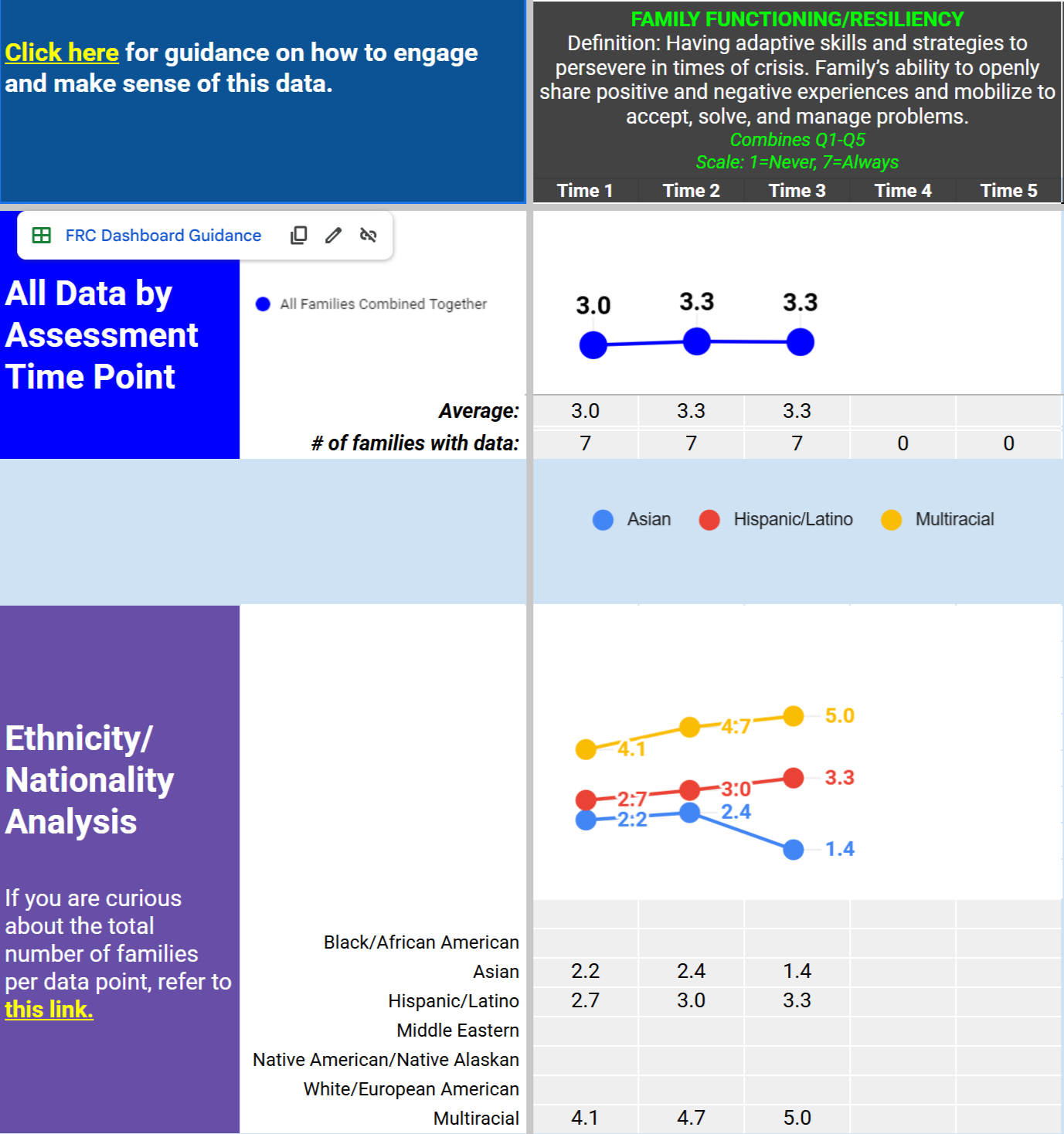July 30, 2025 | By: Allison Sponseller and Annie Lindsey
LFA has partnered with many nonprofit organizations that need a custom-made dashboard to support them to easily understand, visualize, and access key up-to-date data points. In this blog, we highlight some key principles that we have employed to develop dashboards that add value to organizations’ work, showcasing our partnership with Safe & Sound as an example.
Key Principles for Building an Impactful Dashboard
Collaborate closely with our nonprofit partners. We are experienced in carefully listening to our partners’ needs, developing draft dashboards for them to review and pilot, and then making iterations, in order to land on a final product that adds deep value to their work. In our partnership with Safe & Sound, we collaborated closely to develop the Communities of Care Protective Factors Database and Dashboard. (See below for screenshots of this dashboard.) Our team carefully noted Safe & Sound’s priority needs for the dashboard, including an easy-to-use interface, and clear instructions for staff entering data. After drafting the dashboard, we piloted the tool with staff at the Safe & Sound family resource centers (FRCs), to gather staff input on the provided instructions, their experience entering data, and the dashboard’s overall design and usability. We used this input to inform final revisions to the database and dashboard. In all our engagements, we typically use free, cloud-based products to ensure lasting accessibility to our clients, keeping in mind their data needs and resources available.
Safe & Sound Communities of Care Protective Factors Database and Dashboard: Excerpt
This snapshot of the dashboard with placeholder data depicts a composite score showing family functioning/ resiliency at three time points, and then shows the breakdown for this datapoint by ethnicity. This snapshot comes from a single tab in the database and dashboard, and is linked to a data entry tab. If staff were to add new data, the results depicted here would change automatically.
LFA provided Safe & Sound staff with a set of reflection questions that they could use to consider and make sense of these data.
Support staff engagement with the tracker and corresponding data tools. At LFA, we regularly create simple data and evaluation tools that are accessible to a range of users, including those with little to no background with data tools or databases . We know that data tools are only as strong as the guidance provided for staff to use these tools in an effective way.
Making our tools usable includes providing clear instructions and guidance, both through written steps, live training, and technical assistance. For the Safe & Sound Communities of Care Protective Factors Database and Dashboard, we included clear written instructions for entering assessment data into the database and hosted a learning session with the FRCs to walk through the steps. We also paired the dashboards with guidance documents that provided best practices and discussion prompts for the program teams to engage with the data for reflection. We hosted a second learning session to discuss how to interpret the data dashboards, and we included an instructions/FAQ document along with recordings of each learning session for the FRCs for reference following the sessions. These resources provided a starting point for staff to build comfort with talking about data and comparing data over time, including looking at different data cuts based on demographic data.
Build in Opportunities to Increase Staff Capacity. When developing a tool or resource with a nonprofit partner, we believe it’s important to build staff capacity to work with the tool itself, while also cultivating or strengthening skills that they can use in a variety of ways in the future. Most of our engagements include some elements of training and technical assistance in order to build staff capacity for evaluation, learning, and continuous improvement. When developing dashboards, we have ripe opportunities to support staff to deepen their knowledge and understanding in a variety of ways, including: understanding the importance of regular, timely, and accurate data collection; building technical skills to use tracking tools with ease; recognizing the value of reflecting on data, and developing ways to analyze and learn from data.
Ready to Learn More?
We consider it an honor to support nonprofit organizations to deepen their evaluation and learning practice through the development and use of data dashboards.
If you're eager to learn more about data dashboards, or have an insight to share, please add a comment below, or contact us at info@learningforaction.com.


